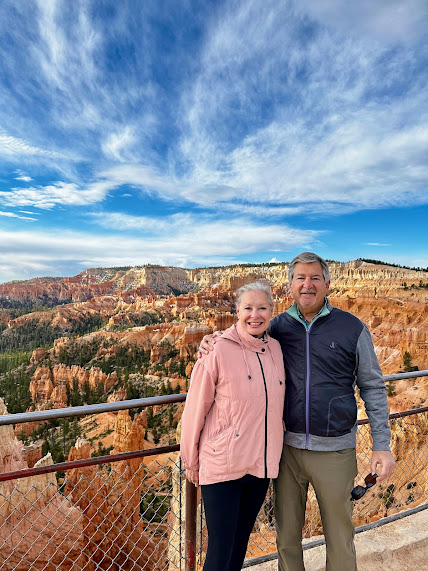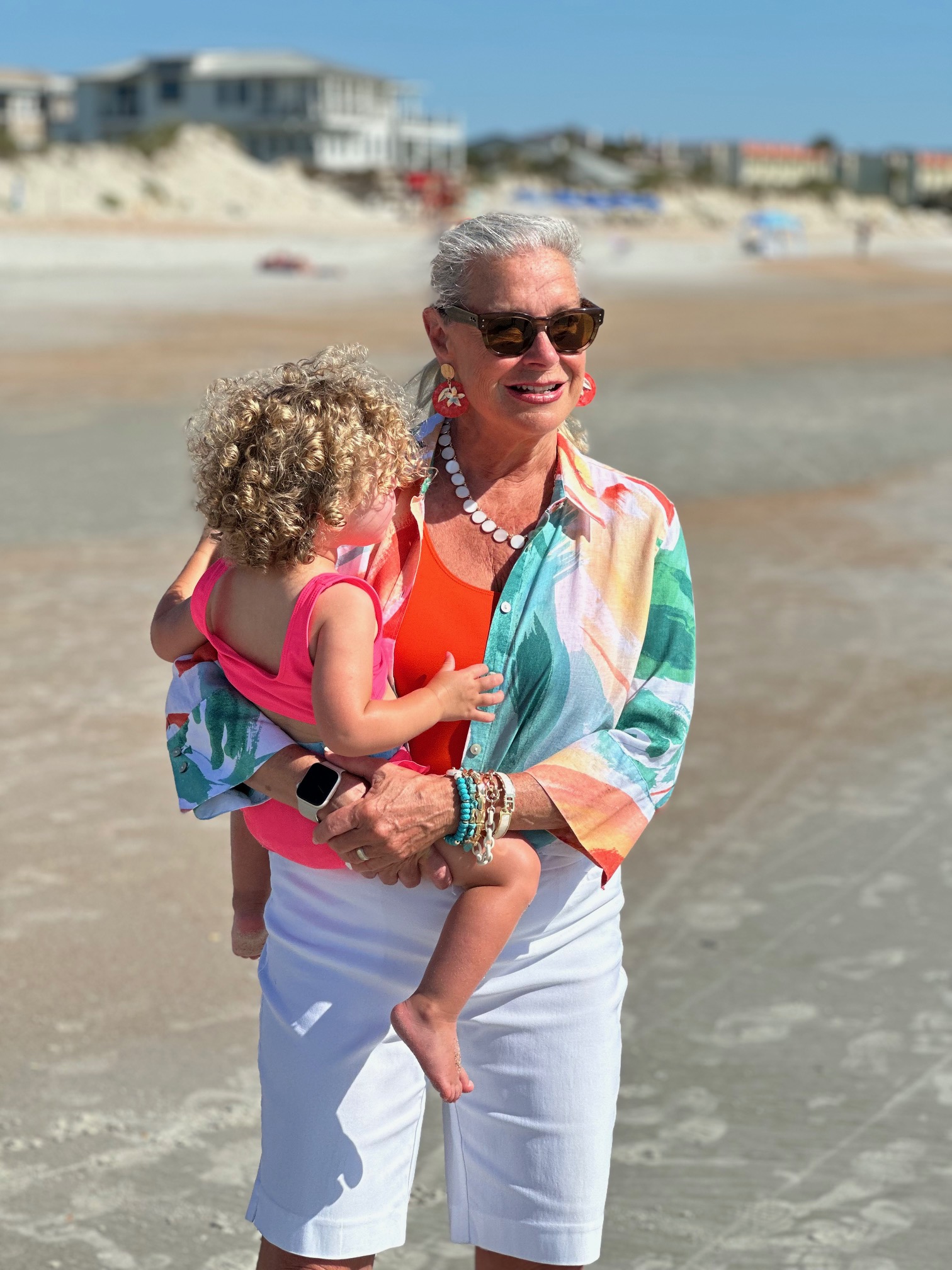Travel: Tauck America’s Canyonlands – Part 2

Well, this is part two of our America’s Canyonlands Tour with Tauck. This post will cover the last half of the trip through Utah national parks. I hope you save both posts for future reference if you ever want to take this land tour with Tauck.
Tauck America’s Canyonlands Tour- Part 2
Day 5- Colorado River rafting & on to Bryce Canyon
We spent the morning rafting down the Colorado River after departing the Lake Powell Resort. Our rafting trip began at Lees Ferry. Lees Ferry is officially the border between Glen Canyon and the Grand Canyon, as well as a natural border splitting Northern Arizona and Utah. Because of its location, millions of tourists head over here to begin their rafting trip down the Colorado River and into the heart of the Grand Canyon.
The 2 1/2 hour float trip on the Colorado River takes you through Glen Canyon; your experienced river adventure guide imparts a wealth of knowledge about the canyon as you glide past colorful walls of Navajo sandstone. We dressed in layers because it was chilly on the river until we were in the sunshine.

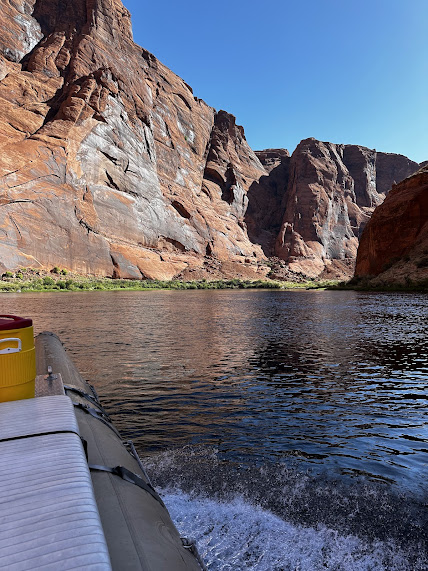
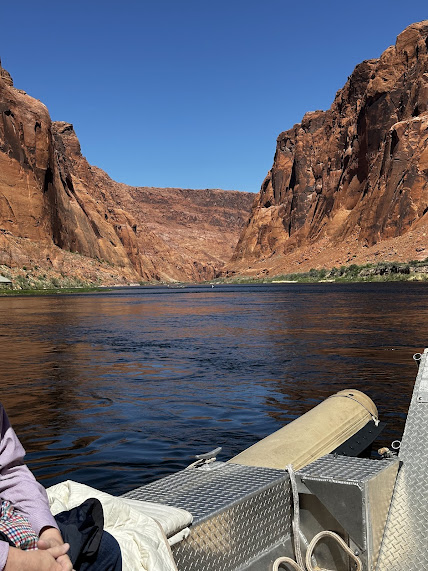
The Descending Sheep Petroglyph Panel along the Colorado River is estimated to be 3,000 to 6,000 years old and is interpreted as a hunting scene. The rock art panel is almost exactly halfway between Glen Canyon Dam and Lees Ferry.


We saw wild horses on the river and thought the one on the right was injured. He didn’t move the entire time we saw them.

We arrived late afternoon at the Lodge at Bryce Canyon. The Lodge doesn’t have television in the rooms, but you can stream your favorite shows on your phone or read a book like I did. I think I fell asleep after one chapter. The food at the national park lodges we stayed in is adequate, but they are never going to get a Michelin star!
Day 6- Bryce Canyon (My favorite One on the Tauck America’s Canyonlands Tour)
Of all the national parks we saw on the America’s Canyonland tour, the Grand Canyon and Bryce Canyon were my favorites.
Did you know: Bryce Canyon in Utah is not technically a canyon because it was formed by weather erosion, not flowing water? Canyons, like the Grand Canyon, are formed by flowing water over millions of years. Bryce Canyon is a series of amphitheaters carved into the Paunsaugunt Plateau by millions of years of wind and water erosion, as well as frost weathering.
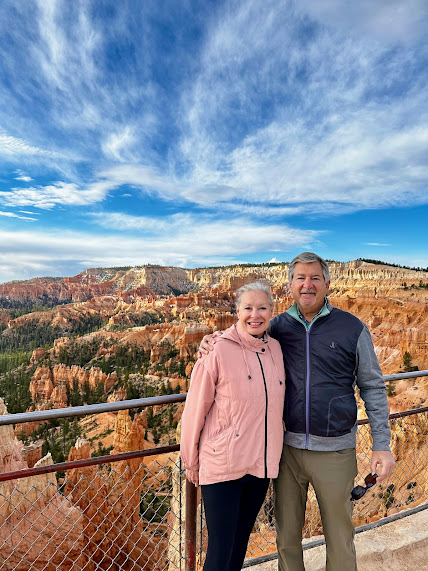
Fun Fact: Bryce Canyon National Park in Southwestern Utah is famous for the largest collection of hoodoos—the distinctive rock formations at Bryce—in the world.
What is a hoodoo? These weirdly shaped rock spires that look somewhat like totem poles are carved by water in arid environments. The word “hoodoo” means to bewitch, which is what Bryce Canyon’s rock formations surely do. A legend of the Paiute Indians, who inhabited the area for hundreds of years before the arrival of European Americans, claims the colorful hoodoos are ancient “Legend People” who were turned to stone as punishment for bad deeds.
If you rise early this morning, you’ll be rewarded with an awe-inspiring Bryce Canyon sunrise as the light of dawn slowly spreads across the hoodoos and other unique geological features steps from your room at The Lodge at Bryce Canyon!
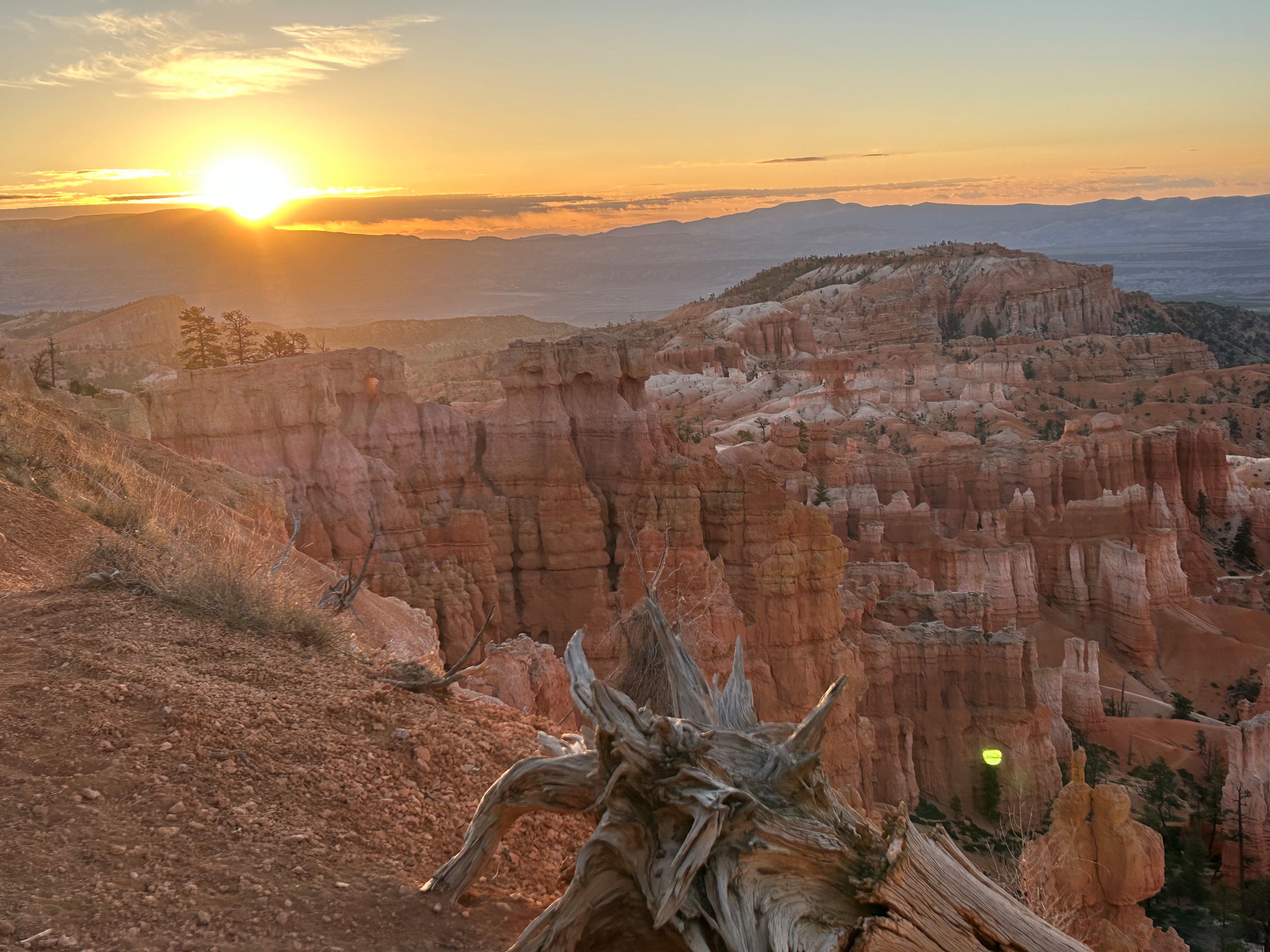
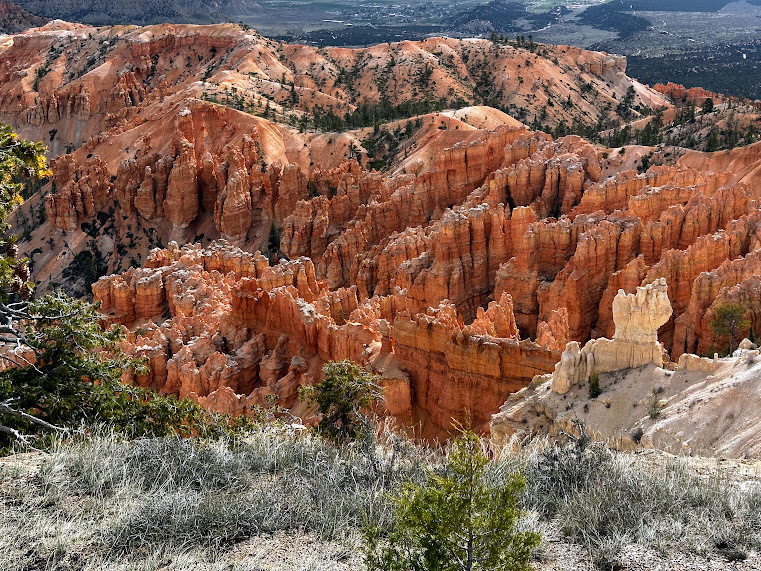
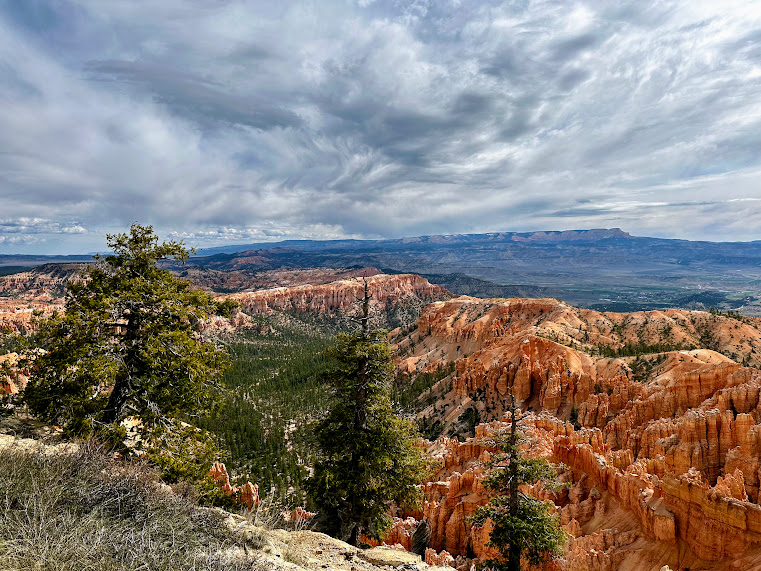
After lunch, we got back onto our bus and headed off to Zion National Park and the Zion Lodge, which was actually the nicest lodge we had stayed at in the national parks.
Day 7- Zion National Park
The history of Zion National Park: The Southern Paiute called this place Mukuntuweap, which means “straight canyon.” By AD 1,100, these groups migrated out of the region as Southern Paiute tribes moved in. The first European American settlers, Mormon pioneers, arrived in the area in the late 1800s. They named the area Zion, which is ancient Hebrew for “sanctuary” or “refuge.”

Zion National Park is a southwest Utah nature preserve distinguished by Zion Canyon’s steep red cliffs. Zion Canyon Scenic Drive cuts through its main section, leading to forest trails along the Virgin River. This is the first national park that we drove down into on our Tauck America’s Canyonland Tour.

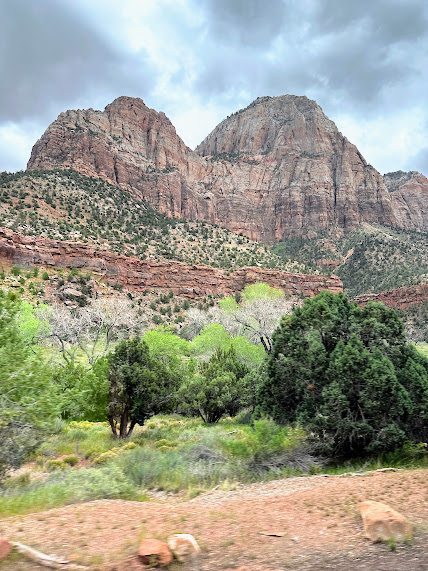
Zion Lodge was our last lodge in the national parks on this trip and one of the Historic Hotels of America. Read more about Zion Lodge.
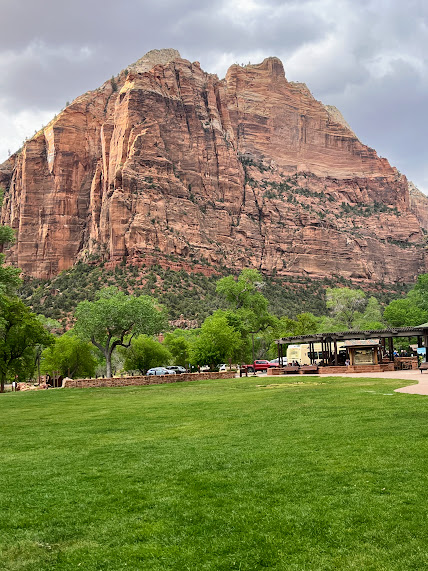

Read more about Zion Lodge.
The next morning, we went on the Riverside Walk. This is one of the most delightful sections in all of Zion and is accessible to everyone. The path is paved and is mostly accessible by wheelchairs. Even if you aren’t hiking The Narrows, you can do the Riverside Walk. This is the first half of The Narrows hike — the paved portion. You won’t get wet or have to walk in the water along this stretch.
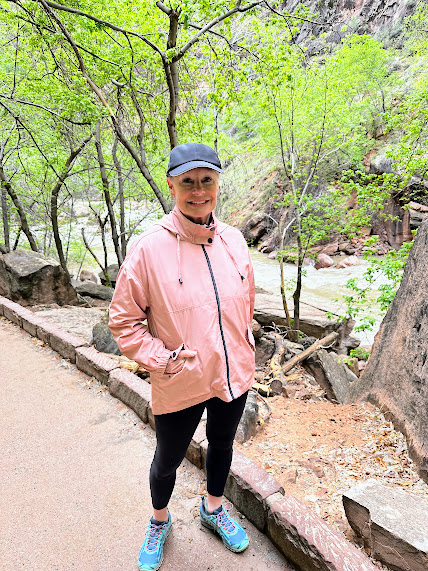
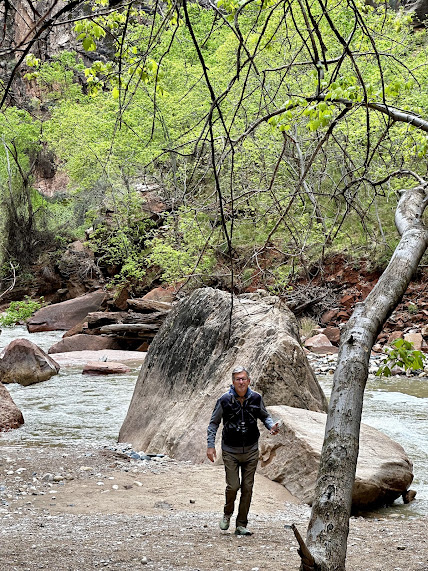
After our walk, we had lunch at the Lodge and then boarded the bus for our final destination, Las Vegas.
Day 8- Departure from Las Vegas

Our trip ended at the Four Seasons Hotel, which is actually the top five floors of Mandalay Bay Resort in Las Vegas. It is a much better hotel than the one we stayed at in September for my midlife influencer conference.
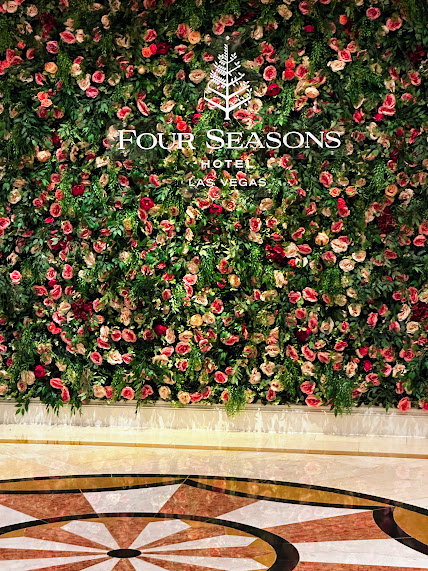
People were sniffing the faux flowers on the wall. I thought was pretty comical watching their reactions when they realized that the flowers were fake!
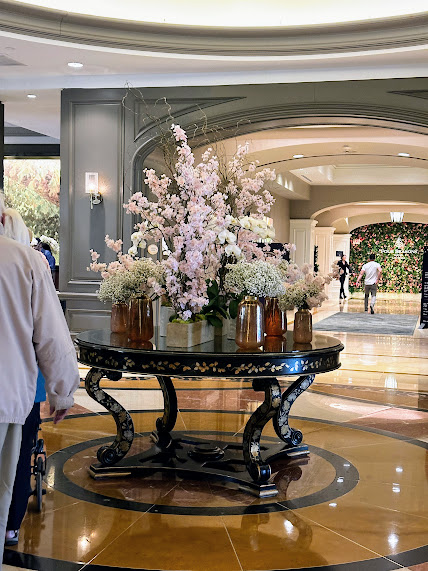
Our room actually had a view of the airport! But it was beautiful and comfortable too!
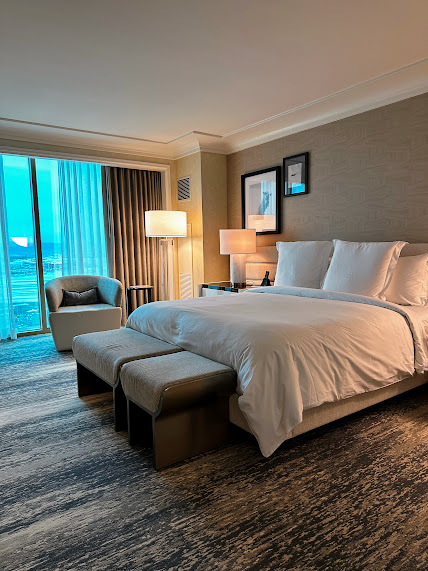
The hotel was also where we said our goodbyes to our travel mates on America’s Canyonlands Tour. We had a final farewell party and got to wear something nicer than walking attire. It’s amazing how many wonderful friends you can make when you travel like this. Some stayed an extra day in Lad Vegas, but we headed back to Atlanta in the morning.
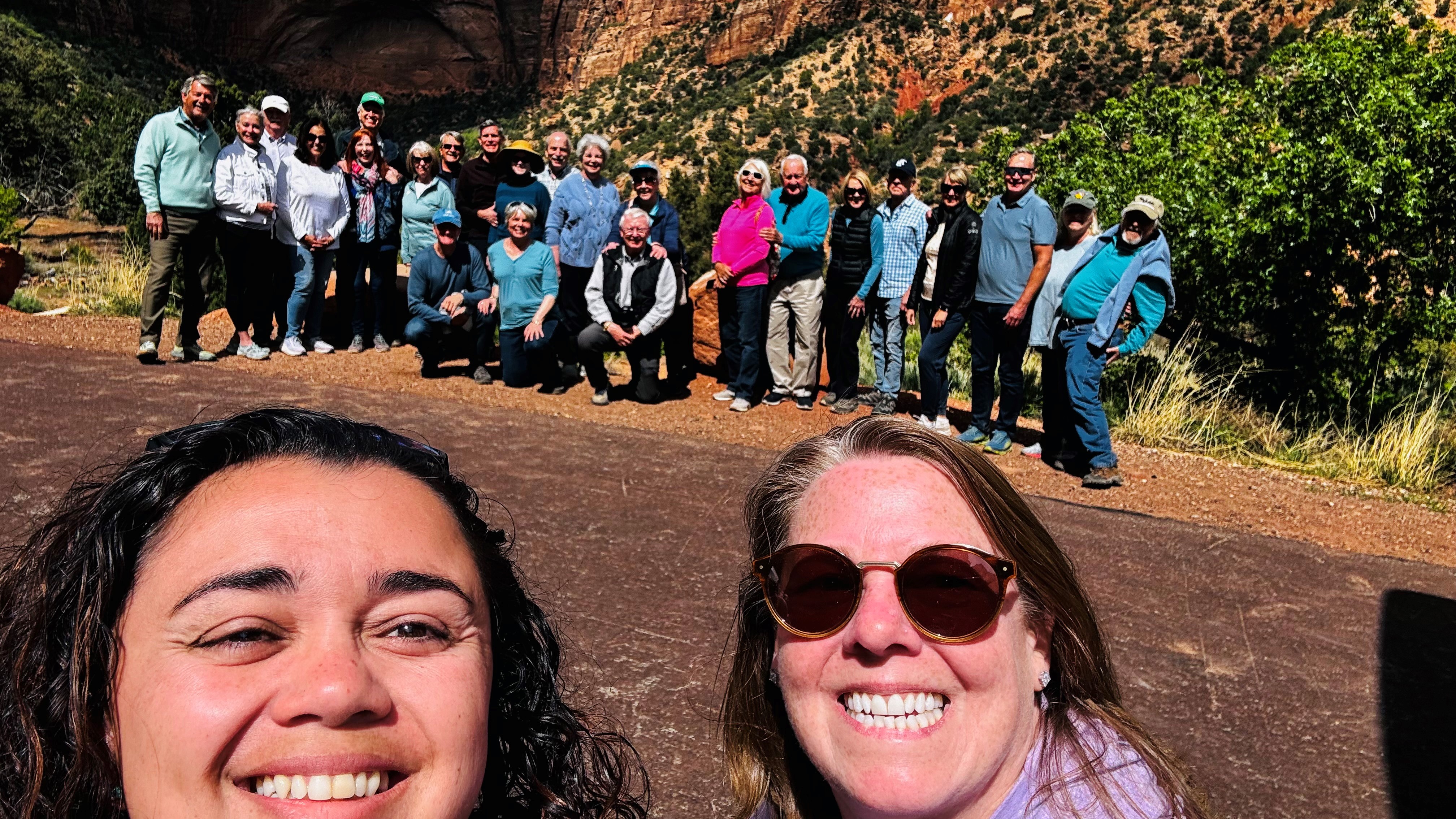
Maybe I will plan a trip again with Tauck and gather some of these people for my next adventure!
I hope you enjoyed my trip through some of the most incredible national parks! We need to do everything we can to preserve our national treasures!
Until next time!


